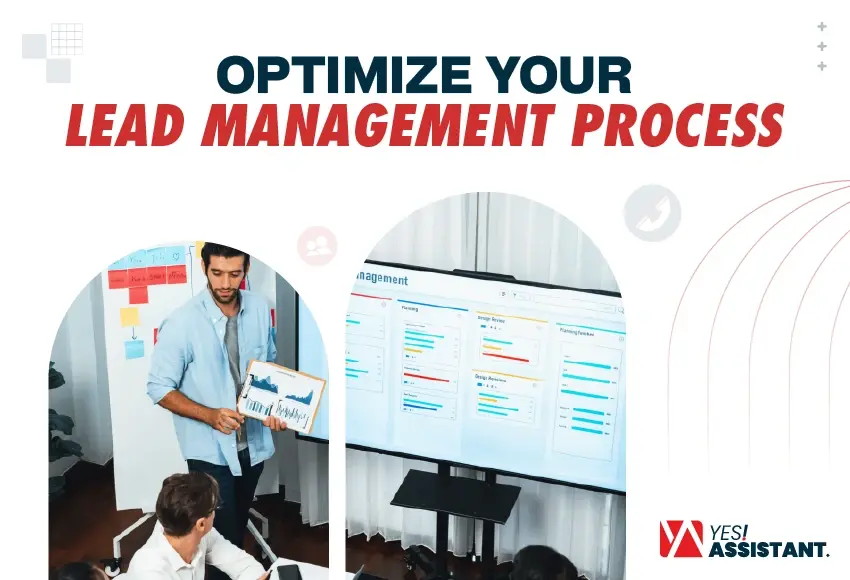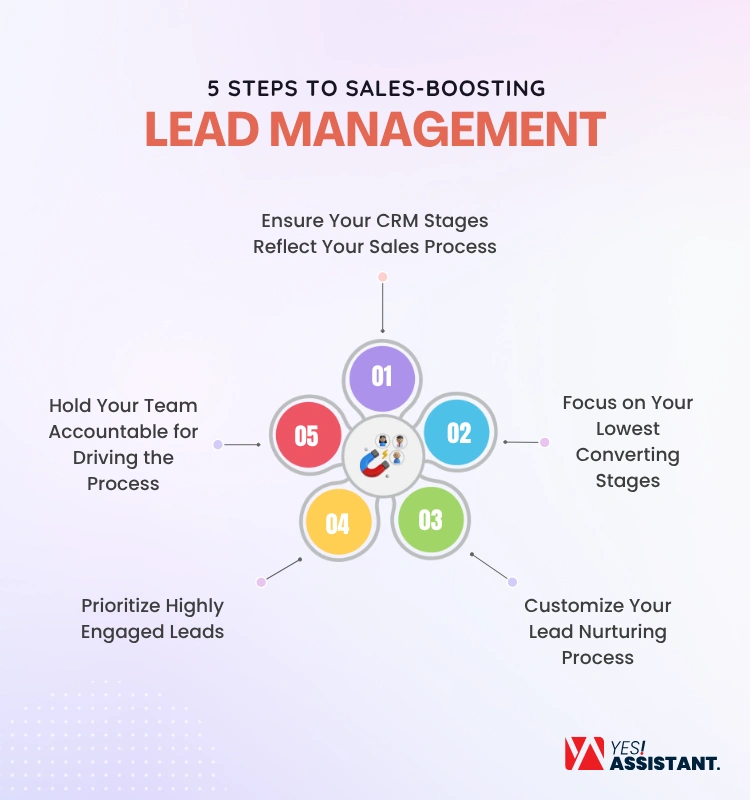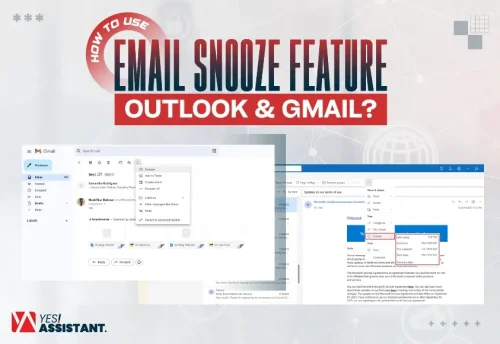
Optimize Your Lead Management Process – Get Leads Now
Effective lead management is key to boosting sales and ensuring your business’s sustainability & growth. It’s an end-to-end journey to collecting, tracking, nurturing, and engaging with potential customers from the very early step. In addition, businesses continuously make efforts to attract new audiences, and a robust lead management process has a 9.3% higher sales achievement.
Through your systematic optimization process, your business can enhance conversion rates, shorten the sales cycle, and increase sales and team efficiency. This guide will help you explore five powerful strategies to build your lead management and ensure your sales potential.
What's Inside
What Is Lead Management?
Lead management is the process of collecting lead information and nurturing it till prospective audiences convert into customers. Monitoring your leads’ interactions with your business is also part of an effective lead management process. This will help you understand your customers properly.
Evaluate your lead management as the entire journey of a potential customer takes place with your business from first interactions to becoming a loyal customer. It’s about systematic tracking, nurturing, and engaging with prospects to ensure a smooth move into your sales funnel.
5 Powerful Ways to Optimize Your Lead Management Process & Boost Sales
Optimizing your lead management strategy, nurturing engagement, and increasing sales team efficiency. Besides, mastering your CRM, targeting low-converting stages for personalized nurture, and empowering the sales team.

1. Ensure Your CRM Stages Reflect Your Sales Process
Aligning your CRM with the experiential sales journey is non-negotiable for clarity and efficiency.
Many businesses mistakenly set up a CRM optimization that truly reflects their unique sales pipeline. Therefore, aligning with your CRM stages precisely with the natural progression of your lead tracking stages.
- Audit Your Current Funnel: Take a look at how leads move from initial contact to a closed deal, and check the key milestones.
- Redesign for Clarity: Rename or redecorate your CRM stages to harmonize the actual steps. For example, use “Initial Contact Made” instead of “Prospecting.”
- Define Exit Criteria: For each stage, define clearly what actions or information are needed to move leads into the next stage. This ensures your consistency and prevents leads from stagnating.
2. Focus on Your Lowest Converting Stages
Every sales funnel drop-off at staging, where your leads unexpectedly drop off. Identifying and fixing these low-converting stages is one of the quickest steps to boost your overall sales performance. It’s like finding a gap in your revenue pipeline and sealing it shut.
- Data Drive: Analyze your CRM data to identify which stages have maximum drop-off rates. Therefore, make it effective from the Marketing Qualified Lead (MQL) to the Sales Qualified Lead (SQL) process.
- Root Cause Analysis: After identifying deeply regarding your problems with messaging, your sales reps are equipped with the right roots or training.
- Targeted Tactics: You need to implement personalized follow-up sequences, provide engaging case studies, or offer limited-time incentives. Also, refine your lead scoring, providing sales with more context on marketing interactions to implement a rapid response system for hot MQLs.
- A/B Test and Iterate: Experiment with new approaches at these specific stages and measure the impact on conversion rate optimization.
3. Customize Your Lead Nurturing Process
A one-size-fits-all lead-nurturing strategy is bound for direct failure. To accurately engage and convert leads, you need to find your prospects’ needs, pain points, and current state in the buying cycle. Personalized lead nurturing builds trust and demonstrates that you understand your prospects’ challenges, resulting in buying from you.
- Segment Your Leads: All leads are not the same as your expectations. Segment leads based on industry, company size, and behaviour (like web page visit, resource downloaded), and lead score. This segmented follow-up improves outcomes for your lead management.
- Personalize Content & Offers: Craft highly relevant content that addresses your prospects’ interests. If the audience downloaded an eBook by subscribing through email, then follow up with sending case studies consistently by email marketing.
- Automate Smartly: Implement automated email drips and follow-up sequences that start based on lead behavior. Email automation ensures timely and consistent communication without manual effort.
4. Prioritize Highly Engaged Leads
When you rush on generic leads without focusing on who is actively seeking a solution and ready to buy. Ensure you’re spending your efforts with the highest probability of a closing deal. You may include a potential sales virtual assistant with your sales team, who helps you to build robust sales lead strategy and contribute to boost sales.
This is a why, lead scoring model, and user behavior data insights give you engagement signals with potential audiences.
- Implement a Strong Lead Scoring Model: Assign scores to leads based on your audience’s demographic information (like Job title and company size), and behaviors (like website visits, email opens, content downloads, and demo requests). This lead scoring model helps you identify potential prospects.
- Leverage CRM & Analytics Tools: Your CRM should automatically track engagement signals. Therefore, use this data to create a dynamic lead score that updates in real-time.
- Define Sales-Qualified Lead (SQL) Criteria: Establish an entrance at which a lead is considered a sales-qualified lead. This ensures sales reps eliminate wasting time on incomplete prospecting and ensures marketing delivers high-quality leads.
5. Hold Your Team Accountable for Driving the Process
Build a culture of ensuring sales accountability, with both sales and marketing invested in lead conversion success. Without having clear ownership, defined KPIs, and transparent performance, it can be ineffective and abortive. Thereon, team alignment with sales and marketing around sharing goals is key to ensure continuous improvement and maximizing revenues.
- Assign Clear Ownership: At every stage of the lead generation process, there should be a leading person. The leading person will ensure specific lead generation or a sales rep for a particular sales pipeline stage.
- Set Measurable KPIs: Establish clear and measurable goals for each team and individual. For instance, for the marketing team, set KPI like, number of MQLs and MQL-to-SQL conversion rate. For sales, set KP like SQL-to-Opportunity rate, Opportunity-to-closed-Won rate, and average sales cycle length.
- Shared Dashboards for Transparency: Implement your shared dashboards and reporting tools (Which often built into your CRM). This provides perfect visibility into lead performance across the complete funnel; also develops collaboration to help identify issues quickly.
- Regular Performance Tracking: Schedule consistent meetings between sales and marketing to track performance, discuss bottlenecks, and brainstorm solutions together. This will build a performance review system for effective ongoing sales optimization.
Benefits of a Well-optimized Lead Management System
When you implement these strategies into action, you’re making small changes. It’s about immediately transforming your sales potential.
According to Jennifer Butler Keeton, ‘Companies using dedicated CRO tools see an average ROI of 223%,’ highlighting the substantial value of investing in conversion rate optimization. Published December 6, 2024
A well-optimized lead management system delivers incredible benefits:
- Focus on quality leads and personalized nurturing that will increase your conversion rates, and you’ll naturally convert more prospects into customers.
- The shorter your sales cycle, that optimize the process and ensure prompt follow-up — leading to moving through your funnel faster.
- Increase your sales team’s efficiency. Your sales reps spend less on low-qualified leads and more time closing deals. This is boosting morale and productivity.
- When leads are effectively managed, your marketing efforts outcomes with better returns. Improving ROI on marketing spends and generating leads that transform into actual revenue.
- A clear data-optimized process allows you to predict sales accurately and build a sustainable growth engine.
Key Takeaways
Optimizing your lead management process is not fixed, and it’s an ongoing journey. Your business can get more customers and increase sales if you know how to manage leads. Ensure your CRM aligns with your sales process, focusing on improving low-converting stages to customize your lead-nurturing strategy.
When you engage with high-value leads and improve teams’ accountability, you’re mastering the art of converting them into loyal customers. This strategy gives you greater outcomes and long-term success in improving lead management and boosts your sales.




